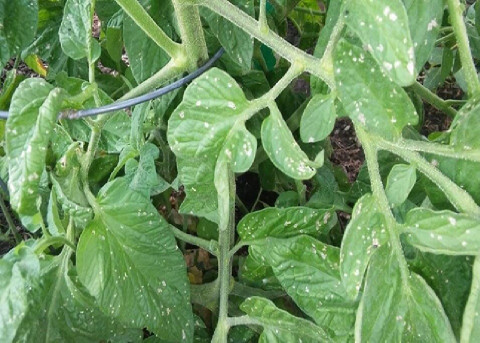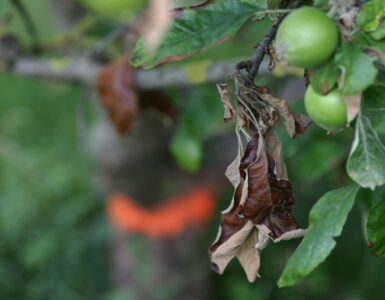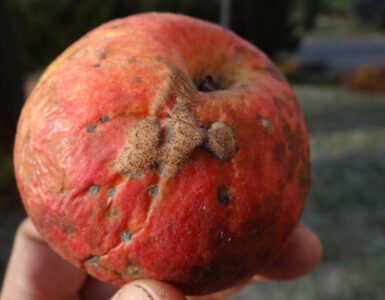This article will discuss some causes of white spots on tomato leaves and other plant parts. Additionally, we will examine the damage they cause and explore natural remedies to help fix the problem.
Tomatoes are grown nearly everywhere in the world, in gardens and greenhouses.
Like any plant, they are susceptible to impairments, most evident in spots, patches, or specks on the fruit, stem, and/or leaves.
However, in some cases, the problem cannot be eliminated. This is due to the extent of the damage being too great for the plant to survive, or the cause of the damage itself.
Below are some common causes of tomato plant leaves, fruit skin, and other parts turning white. We’ll also explore how to address the problem naturally.
Pest Activity
Stink bug feeding is one reason for the development of cloudy spots or whitish areas on the leaves and fruits of tomato plants. Still, other garden pests, such as aphids, thrips, and spider mites, can also cause this damage.
Leaves are the most susceptible to damage from these pests. You may also notice cloudy white spots under the skin or inside your tomatoes.
However, you can prevent or deal with stink bug infestations relatively easily.
Treatment (Home Remedies):
- Handpicking
- Neem oil
- Insecticidal soap.
- Water hose.
Prevention:
- Weed control.
- Companion plants.
Adverse Weather Conditions
Sunscald is caused by a plant getting too much sun and/or being in the path of hot, dry wind. Therefore, hot weather or extreme heat is the main culprit.
With this condition, unripe or ripening fruits begin to show pale white or yellowish blotches. However, sunscald is something that can be prevented relatively easily.
Treatment:
- Removal of damaged fruit.
- Organic sprays like IV Organic.
Prevention:
- Pruning
- Mulch
- Shade
- Evening watering
- Avoiding overhead watering
Nutrient Deficiencies
The type of soil in which your plant is planted plays a significant role in its health. While issues regarding nutrients are not as common as the first two subheads, they do happen.
Plants lacking certain nutrients may show whitening or yellowing of the leaves. The plant nutrients that are most affected include:
- Nitrogen: Adding fertilizers, such as bat guano, can help correct a nitrogen deficiency.
- Phosphorus deficiency is treatable with the proper use of fertilizers, such as alfalfa meal.
- Potassium: Adding kelp will help with this.
- Calcium: Adding lime is one way to increase this nutrient.
- Manganese: Apply a foliar feed containing manganese.
Disease
This category is another common cause or medium for the development of tiny white spots on tomato plant leaves.
High humidity, poor drainage, and low air circulation can lead to plant diseases. Lack of sun, cooler temperatures, and excessive watering can also be factors.
1. Septoria Leaf Spot
Septoria leaf spot first appears on the lower leaves of the plant. You may notice circular gray spots with dark borders.
Treatment:
- Use of organic fungicides.
- Handpicking damaged leaves.
Prevention:
- Crop rotation.
- Leaf debris disposal is necessary to keep the disease from overwintering.
2. Powdery Mildew
If your tomato leaves turn white, it is likely due to powdery mildew. This common disease appears as a thin layer of powder on the leaves [1].
Treatment:
- Removing the dead leaves.
- Clearing leaf debris.
- Vinegar.
- Neem oil.
- Baking soda spray.
- Liquid soap.
- Organic copper fungicides, such as Cueva, are effective.
Prevention:
- Watering late in the day.
- Improving drainage.
- Providing access to plenty of sunlight.
Read more about how to get rid of powdery mildew on plants.
3. Leaf Mold
Tomato leaf mold mainly affects plants growing inside greenhouses and those in high tunnels.
Symptoms may include faint green spots on the upper side of the leaves. You may also notice small gray, yellow, or white specks.
It is caused by the fungus Passalora fulva [2]. In severe cases, it can also affect the blossoms and fruits.
Treatment:
- Prune where needed.
- Remove leaf debris.
- Application of organic fungicides.
- Cleaning with a commercial sanitizer at the end of the growing season.
Prevention:
- Improving air circulation.
- Lowering humidity to below 85%.
- Use drip irrigation to avoid overhead watering.
4. Sclerotinia Stem Rot (White Mold)
You will notice this around the time of flowering. White mold mainly affects plants in wet and cold climates.
Tomato stems will look white with black pebble-like structures inside. Flowers may also have water-soaked areas.
Treatment:
- Remove all infected plants in severe cases.
- Prune leaves and lateral stems that are infected.
- Use a natural fungicide.
Prevention:
- Plant in containers with fresh soil.
- Keep tools and hands clean.
- Provide good drainage.
- Use drip irrigation to avoid overhead watering.
- Sterilize infected soil during the summer months by covering it with sheeting on the ground. This method allows the sun to raise the soil’s temperature, killing spores and mold.
5. Mosaic Rot
Mosaic rot is a viral disease that not only diminishes the yield and quality of the fruit but also can kill the plants.
Spots on leaves may appear yellow-green or faintly white.
Treatment:
- Removal of all infected plants—they can’t be saved.
- Boil tools before washing them with a strong detergent to prevent the spread of disease.
- Washing hands to prevent the spread of disease.
Prevention:
- Avoid gardening in wet conditions.
- Crop rotation using crops that are not susceptible to the virus.
Recommendations
As soon as blemishes appear, action must be taken immediately, or the entire crop can be severely damaged. Therefore, pick any treatment or home remedy for white spots on tomato leaves from the list above.
Even the simple act of handpicking the leaves will help control the damage. Moreover, prevention begins with how you set up your garden, the condition of the soil, and adequate drainage.
Proper transitioning from indoors to outdoors is also paramount if you start with seedlings.
See our complete list of tomato diseases (with pictures) and how to treat them naturally.
Takeaway
These are a few causes of white spots on your tomato plant’s leaves, stems, blossoms, and fruits. Some of them can be devastating to the crop. Mosaic rot can even spread to other plants.
However, despite the potential for issues, tomato plants grow well with other companions and are relatively easy to cultivate.








Add comment